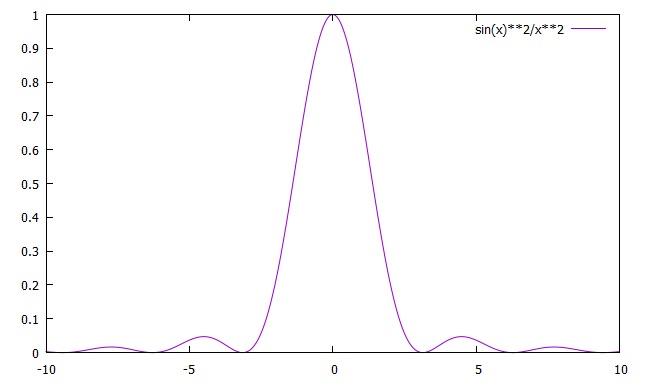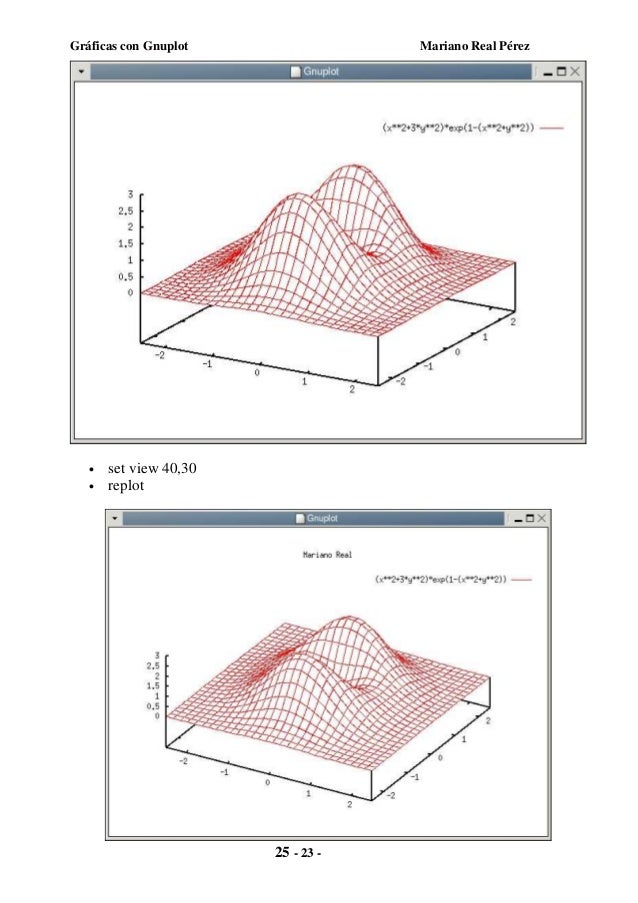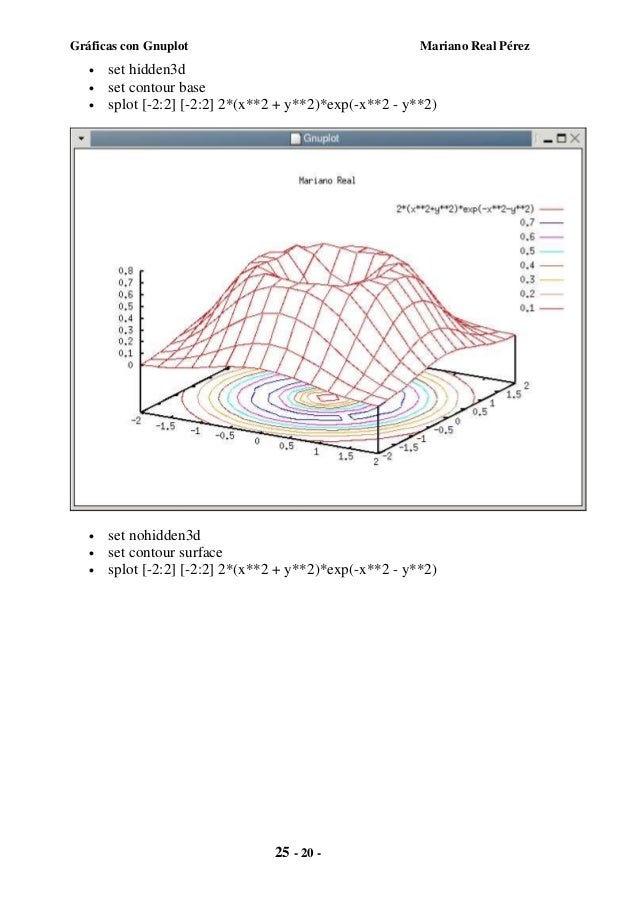

- #Gnuplot fit install#
- #Gnuplot fit code#
You just do whatever the equivalent of `apt install gnuplot` is on your distribution. Makes it difficult for new users to learn, especially if they do not have experience using the command line. This makes it very powerful because it can be scripted, but it also It is simple enough to plot data in just a few lines, flexible enough to produce publication-quality figures, and power enough to "gnuplot" refers to the gnuplot application.Gnuplot is a power, open-source, plotting program that I have been using since undergraduate school." Gnuplot.jl" refers to the Julia package.access to all gnuplot capabilities, allowing to tweak even the smallest detail of a plot => plot preparation īefore continuing, have a look at the Examples page! Notation.
 syntax conciseness, interactivity, Plot recipes => preliminary data exploration. Finally, its extremely concise syntax makes it ideal for interactive data exploration.Īs a final remark, note that the Gnuplot.jl features directly maps onto the different stages of production of a plot: The minimalistic approach allows to value the widely spread knowledge of gnuplot syntax, and ensures a shallow learning curve for the package. A reasonable choice, then, is to rely on the size of the user base, the availability of documentation / tutorials, and the possibility to preview complex examples.īy allowing transparent access to the underlying gnuplot process, the Gnuplot.jl package immediately exposes all capabilities of the backend and allows to take advantage of the many resources available online. As a consequence is also hard to tell whether a package can cope with the most difficult cases, unless you actually try it out. Still, producing complex and publication-quality plots is not an easy task. Indeed, this is exactly the example that is reported in every package documentation (also here: see 2D plots). Does Gnuplot.jl suit my needs?Īny modern plotting framework is able to produce a simple scatter plot, with custom symbols, line styles, colors and axis labels. Gnuplot.jl also provides features 4 and 5, as well as the minimalistic approach. The functionalities 1, 2 and 3 listed above are similar to those provided by the Gaston package. This way all underlying capabilities, both present and future ones, are automatically exposed to the Julia user, with no need to implement dedicated wrappers. The Gnuplot.jl package development follows a minimalistic approach: it is essentially a thin layer to send data and commands to gnuplot. However, if gnuplot is not available on a given platform, the package could still be used in " dry" mode, and no error for a missing dependency will be raised (see Dry sessions). Unlike other packages Gnuplot.jl is not a pure Julia solution as it depends on an external package to actually generate plots.
syntax conciseness, interactivity, Plot recipes => preliminary data exploration. Finally, its extremely concise syntax makes it ideal for interactive data exploration.Īs a final remark, note that the Gnuplot.jl features directly maps onto the different stages of production of a plot: The minimalistic approach allows to value the widely spread knowledge of gnuplot syntax, and ensures a shallow learning curve for the package. A reasonable choice, then, is to rely on the size of the user base, the availability of documentation / tutorials, and the possibility to preview complex examples.īy allowing transparent access to the underlying gnuplot process, the Gnuplot.jl package immediately exposes all capabilities of the backend and allows to take advantage of the many resources available online. As a consequence is also hard to tell whether a package can cope with the most difficult cases, unless you actually try it out. Still, producing complex and publication-quality plots is not an easy task. Indeed, this is exactly the example that is reported in every package documentation (also here: see 2D plots). Does Gnuplot.jl suit my needs?Īny modern plotting framework is able to produce a simple scatter plot, with custom symbols, line styles, colors and axis labels. Gnuplot.jl also provides features 4 and 5, as well as the minimalistic approach. The functionalities 1, 2 and 3 listed above are similar to those provided by the Gaston package. This way all underlying capabilities, both present and future ones, are automatically exposed to the Julia user, with no need to implement dedicated wrappers. The Gnuplot.jl package development follows a minimalistic approach: it is essentially a thin layer to send data and commands to gnuplot. However, if gnuplot is not available on a given platform, the package could still be used in " dry" mode, and no error for a missing dependency will be raised (see Dry sessions). Unlike other packages Gnuplot.jl is not a pure Julia solution as it depends on an external package to actually generate plots. #Gnuplot fit code#
a procedure to decouple plot data and aesthetics from the Julia code used to generate them. an interactive data exploration framework, by exposing a carefully designed, extremely concise and easy to remember syntax (at least for users with minimal gnuplot knowledge). a fast response, by relying on an external program (rather than on a large Julia code base). a well-documented framework, by taking advantage of all the gnuplot documentation, tutorials and examples available on the web. publication-quality plots, by exploiting the capabilities of a widely used tool such as gnuplot, and its many output formats available. Gnuplot.jl package fills the niche of users who needs: As such, it is hard to find a single package to fit all needs, and many solutions are indeed available in the Julia ecosystem. If you're unfamiliar with gnuplot have a look at:Ī powerful plotting framework is among the most important tool in the toolbox of any modern scientist and engineer. Save sessions into gnuplot scripts, to enable easy plot customization and reproducibility. (actually all those supported by gnuplot) Support for multiple plots in one window, multiple plotting windows, as well as ASCII and Sixel plots (to plot directly in a terminal) ĢD interpolation of scattered data on a regular grid Įxport to a huge number of formats such as pdf, png, gif, $\LaTeX$, svg, etc. 
Transparent interface between Julia and gnuplot to exploit all functionalities of the latter, both present and future ones Īvailability of all the palettes from ColorSchemes No need to learn new API functions or keywords: only two macros ( for 2D plots, for 3D plots) and a basic knowledge of gnuplot are enough to generate most plots The package main features are:Įxtremely concise yet meaningful syntax, makes it ideal for interactive data exploration

Have a look at Basic usage and Examples for a quick overview. The Gnuplot.jl package allows easy and fast use of gnuplot as a data visualization tool in Julia. Home Gnuplot.jl A Julia interface to gnuplot.








 0 kommentar(er)
0 kommentar(er)
